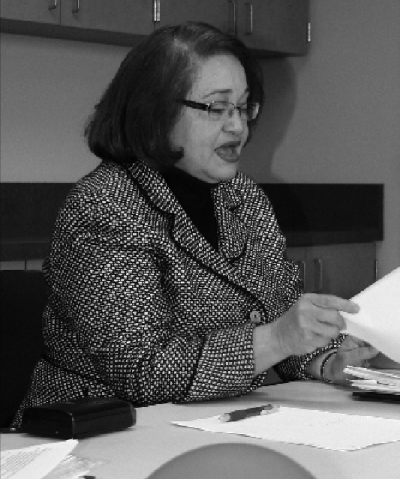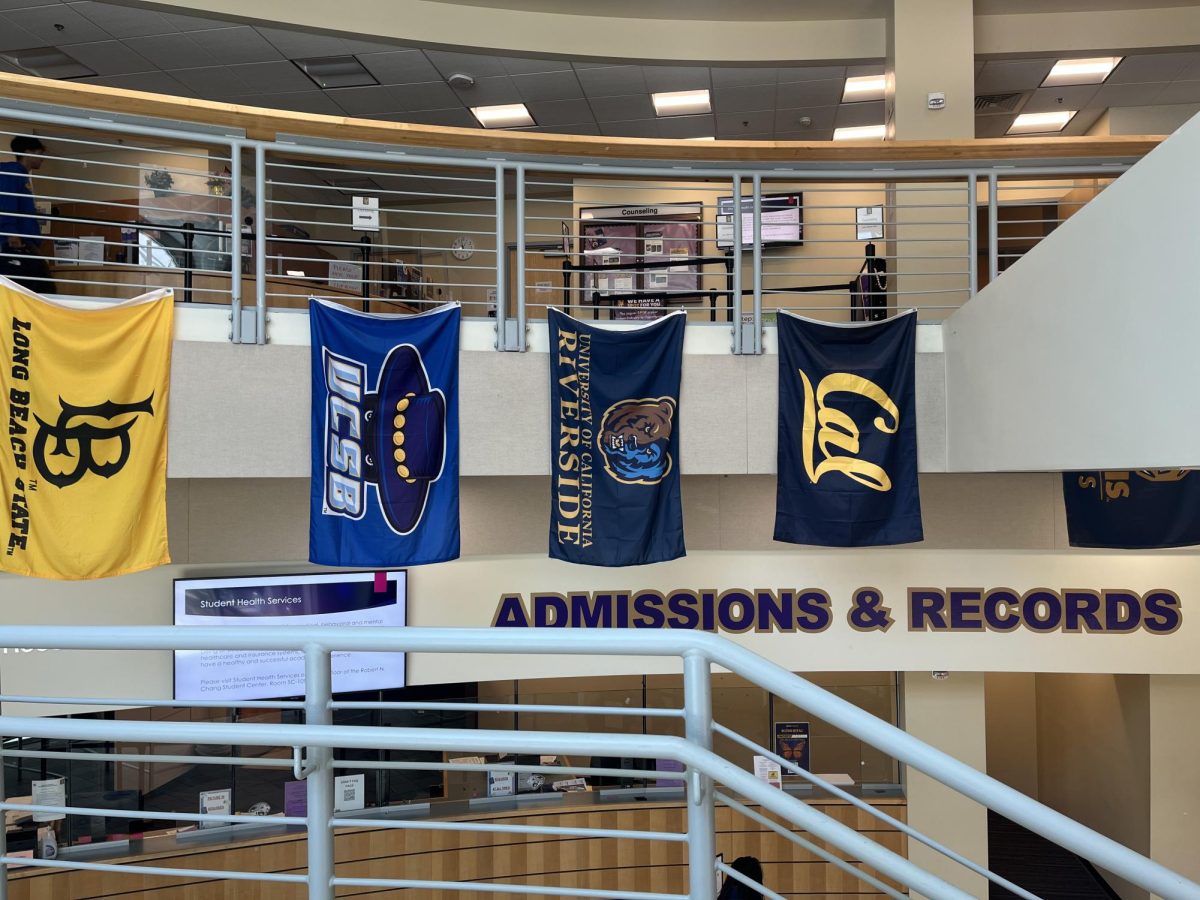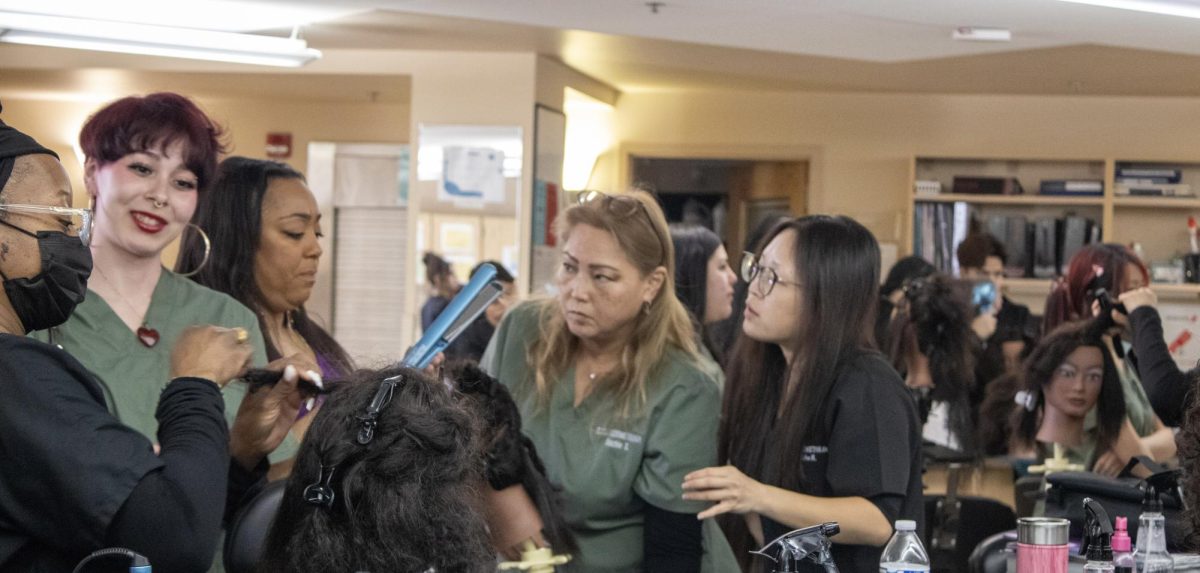 [/media-credit]
[/media-credit]
HOW DO YOU PLAN TO CONTRIBUTE TO CLOSING THE ACHIEVEMENT GAP? That’s probably my favorite question in the world, not because I have the answers but because it’s one that, when we talk about a crisis of enormous proportions facing the nation and the state and the Silicon Valley, that’s the one. Let me also say that it’s not because we don’t know what to do. I have reviewed studies, programs, initiatives, curriculum development procedures, instructional models, you name it, about how to bridge the achievement gap. And I have seen those initiatives work with children in the worst possible economic and education and socioeconomic situations, and I have seen them exceed. I want us to be real clear that the ability to achieve, or not achieve, is not inherent. There’s nothing about the individual, the ethnic group, the language background, that says, “Oh, it’s because there’s this ethnicity or it’s because they don’t speak the language. or because of this particular gender or this particular race. It’s nothing to do with that. In fact, when we do the right things for students, the outcomes are magnificent.
… I want to bring together a frank conversation about all of the things we have in this district that don’t seem to be working well together. They each do amazing things, but they’re little silos — achieving the dream, the equity scorecard, CLASS, the Basic Skill Initiative, all these things we have – but we in this district have a very poor success of bridging that equity gap. Now it doesn’t begin with us, but it doesn’t matter. Finger pointing to K-12 is not going to solve the problem. Working with K-12 will, and insuring that we also work with the four-year colleges and universities also will. And working with business and industries that want a prepared workforce but they’re not going to get it, also will help toward that.
HOW DO YOU FEEL ABOUT THE ACCREDITATION PROCESS AND WHAT MIGHT HAPPEN TO SJCC IF THE REQUIREMENTS ARE NOT MET?
In terms of all the other pieces that need to be taken care of, a lot of that has to do, pure and simple, with a lack of sustained and ongoing leadership on this campus. For the better part of the last eight years, you haven’t had consistent leadership in terms of a president, a vice president, and even below that, at the dean level. It’s very difficult to sustain gains, not to start over, not to stay the course, not to make sure that certain things that were put in place continue to happen.
So, we have to figure out why that is happening in this district. How do we attract and retain a powerful student center leader as a president. I think that will, in turn, take care of some of the findings associated with planning, associated with curriculum issues, student learning objectives, campus facilities, evaluations, etc., all of those things will happen.
Now, what will happen with the recommendations? As you know, there are various levels of “sanctions.” … There are few colleges in California that are meeting accreditation with flying colors. Because it’s a lot of … that’s a story for another time. There’s a lot of controversy about the accreditation commission and its role and function, and some other time we’ll talk about that because I have a lot to say about that. (laughs).
But, what will happen? The greatest thing that can happen is they say, “Flying colors, see you in six years.” Great. (But) that’s not happening in California. Maybe you can count on one hand where the state team comes and says, “Beautiful. See in six years.” Invariably, they have findings and recommendations and sanctions. What we will probably get is a set of findings with a midterm report. In other words, it says we’re not going to wait until six years go by, we’re going to give you three years to come back to us to tell us if you fixed this. And that’s what I think will happen. Very likely.
IS SHUTTING DOWN THE SCHOOL A POSSIBILITY?
No, no, no, no, no, no.
… Let me underscore that I do not think for a minute that we are there. We probably will get a set of findings, and a couple or three of those or so that will be warnings, which means we have to move a lot quicker on certain things. Then, obviously, there’s the ultimate, which is you lose accreditation.
.. So I’m pretty sure we’ll have some serious findings, probably some warnings, but with these three years within which to respond to the findings.
FINANCIAL AID LINES ARE LONG. WHAT CAN BE DONE TO IMPROVE THE FINANCIAL AID PROCESS?
The lines for student services, in general, including the lines for financial aid, orientation, I know you know that over the last three to four years have gotten worse and worse, and that is a direct function of us losing, in one case, 67 percent of our categorical moneys.
So we’ve been struggling with our fears of losing staff, our support staff, in droves, so I’m not shirking off responsibility, but much of it is at the hands of the state Legislature, who has said, by the way, and continues to say, and I think it’s very ill-founded public policy that student support services are not as critical as instruction. They’re basically saying, “We just need a teacher and a classroom. This other stuff you can let go, so cut, cut, cut.”
And we know, specifically at community colleges, that when you do that, you impact retention, persistence, success, all of these other things.
So your question about the lines, the increasing wait, have come because we basically have fewer people. That’s kind of a no-brainer, but what can you do? I don’t know what San Jose City has done or what Evergreen has done, I would need to look a that a lot more clearly, and I don’t want to assume they haven’t done these things because I don’t know enough, and I’m not the college president. But there are things that can be done to shorten your stay.






